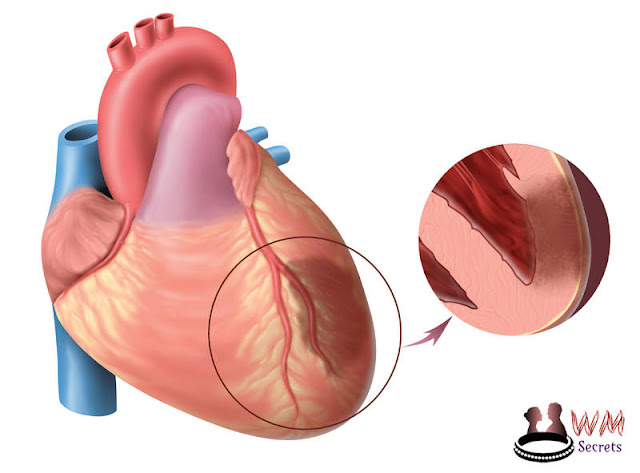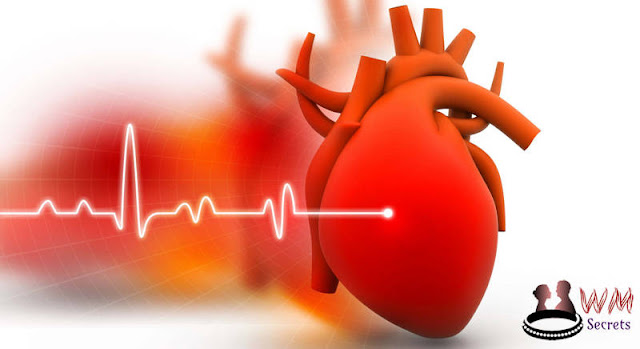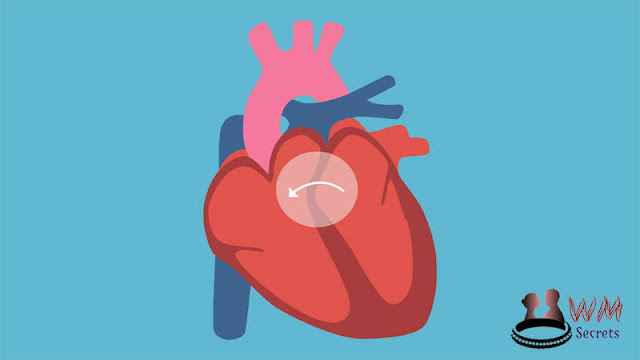Cardiology is the science of heart disease and its treatments. This includes surgical procedures and medication alike. Heart disease can have many different causes, ranging from congenital heart disease to allergies to inflammatory heart disease.
Especially common are the so-called coronary heart diseases, which are characterized by a gradual "calcification" of the coronary arteries and can lead to angina pectoris or a heart attack. But what other heart diseases are there and what effects on the health of those affected have these?
Overview of this article
- · Symptoms of heart diseases
- · High blood pressure
- · Functional heart disease (cardiac neuroses)
- · Endocarditis
- · Valvular heart disease
- · Pericardial
- · Cardiomyopathies
- · Heart rhythm disturbances
- · Coronary heart disease - heart attack
- · Heart failure (heart failure)
- · Congenital heart defects
General Symptoms of Heart Diseases
While high blood pressure is often only detected by measuring blood pressure, many heart conditions have specific symptoms that usually lead patients to a doctor by themselves. The most common side effects of heart disease are chest pain, which can spread to the back or arms, tachycardia, chest pain (angina pectoris), shortness of breath during exercise, loss of fatigue and weakness, and severe cardiac arrhythmias. These symptoms often indicate heart disease, but the list of possible heart disease is long. Some heart diseases are also acutely life-threatening and require treatment by the ambulance. These include heart attack and carcinogenic shock.
High Blood Pressure Can Damage the Heart or even be the Result of Heart Disease 
High blood pressure (hypertension) does not hurt and is otherwise very difficult. In most cases, hypertension is a classic chance diagnosis in the context of a medical examination. However, a constantly increased pressure in the blood vessels can lead to damage in the vessel walls, or even to heart disease.
In a disorder of the coronary arteries threatened eventually a heart attack. If a person suffers from hypertension, the heart battles against a very high resistance in the blood vessels. As a result, the heart muscle has to work more and more to maintain the same pumping power.
More work, in turn, means that the muscle mass, especially the left ventricle, amplified. The heart enlarges due to muscle gain, but at the same time, the oxygen supply to the muscle cells suffers from this enlargement. The heart can become "tired", a heart failure (heart failure) is the result.
On the other hand, high blood pressure is also the result of vascular and cardiac disorders, as, for example, in the course of vasoconstriction (arteriosclerosis), the pressure in the vessels increases.
Functional Heart Disease (Cardiac Neurosis)
Functional heart disease is often not organic heart disease. Very often the psyche plays a big role. Symptoms of functional heart disease include tachycardia, chest pain, and shortness of breath and tightness in the chest.
The associated fears, which can increase to dread, brought this cardiac symptom the name "heart neurosis". In about 15 percent of patients with heart disease, the symptoms cannot be explained organically. Nevertheless, with respiratory distress, rapid heartbeat and fear of dread always first organically caused heart illnesses should be excluded medically before functional heart complaints can be spoken.
Are functional heart disease has been found, are common heart medications such. For example, beta-blockers and sedatives often ineffective or aggravate the symptoms additionally. Heart neuroses are due to mental imbalance and restlessness and speak on the other hand very well on conversation and relaxation procedures.
Heart Disease of the Inner Skin (Endocardial Diseases, Endocarditis)
The heart endocardial (the endocardial) is a very thin epithelial layer that lines the heart inside. The heart valves also produce heart valves. By mostly bacterial infections after operations or delayed colds, the heart can be colonized with bacteria.
A very common cause of heart disease of the heart is rheumatic fever, which occurs as a result of streptococcal infection in childhood. The resulting inflammation leads to endocardial defects (eg scarring) and may also affect valvular valve function.
Heart disease with endocardial involvement therefore often leads to heart valve failure. The symptoms of heart disease of the heart can be very dramatic, ranging from chills and high fever, anemia and heart failure to the risk of embolism.
Emboli are caused by blood clots in the small vessels of the body. After detachment of such a blood clot this z. B. migrate into the brain and close there smaller capillaries. A stroke is a result.
Heart Disease of the Valves
Cardiac disorders such as heart valve defect Herbital valve defects can be congenital heart disease or heart disease during life as a result of heart failure. Inflammation of the heart's lining (pericarditis) initially heals with scarring. If this happens at the heart valves, they can shrink, warp or even partially grow together. As a result, the function of such heart valves is limited. Heart valve defects can occur as stenosis or as insufficiency. But what are the differences between these two forms of heart disease?
In the valve, insufficiency closes the heart valves only insufficient. With each heartbeat, the blood continues to be pushed out through the affected valve but then flows back into the chamber, as the heart valve closes only incompletely. This so-called pendulum blood causes a flow noise, which the doctor can hear with the help of a stethoscope.
On the other hand, valve stenosis prevents the affected heart valve from completely opening. As a result, the blood passage is narrowed, allowing less blood to be expelled every heartbeat. The blood builds up in the heart at the door. This congestion can continue in the long term and be depending on the affected heart valve to further heart disease, eg. As to jammed veins or pulmonary edema lead.
Diseases of the Pericardium (Pericardial Diseases, Pericarditis)
Heart disease involving the pericardium is often the result of bacterial, fungal or viral infections or infections in adjacent organs such as the lungs. Also, heart attacks, tumors of the chest and open heart surgery can lead to pericardial diseases. In essence, in heart disease, acute pericarditis is distinguished from chronic pericarditis.
Both forms are characterized by severe pain behind the sternum and respiratory problems. Cause of these two main symptoms of heart disease with Perikardbeteiligung is the occurrence of the so-called dry or moist pericarditis.
While at the beginning of these heart diseases, the dry inflammation often occurs, this goes on in the course of the wet inflammation. In dry pericarditis, the two epithelial surfaces of the pericardium (inner and outer pericardial leaf) rub together dry. This causes the strong pain and rubbing sounds, reminiscent of leather fools.
Wet pericarditis causes a fluid-filled space between the two pericardial leaves, a so-called effusion. The heartbeat increases to counteract pressure, and at the same time, respiratory disorders are becoming increasingly common, as the effusion also limits the length of lung expansion during breathing.
Left untreated, pericarditis causes manifest heart disease, such as heart failure (heart failure), with massive limitations in cardiac function and the formation of edema throughout the body, as blood flow to the heart is increasingly limited.
Myocardial Diseases (Myopathies, Myocarditis)
An inflammation of the heart muscle (myocarditis) is one of the life-threatening heart diseases, as it may come as a result of inflammation to a functional impairment of the heart and cardiac arrhythmia. Very often, bacterial or viral infections are the cause of myocarditis. In rare cases, medications (e.g. penicillin) and allergies can trigger these heart diseases. Symptoms of myocarditis include shortness of breath, chest pain, rapid heart rate, and extrasystoles (cardiac arrhythmias).
A rare complication of heart muscle inflammation is the cardiogenic shock. This is the consequence of an imminent pumping failure of the heart. Due to heart muscle inflammation, the heart is no longer able to pump sufficient blood into the body. The person is anxious and suffers from an acute lack of oxygen due to the reduced blood flow.
Cardiogenic shock is one of the heart diseases with emergency character. The person concerned must be stored with his upper body raised until the ambulance arrives. Characteristic of the cardiogenic shock is a gradual marbling of the skin on the neck, extremities and on the chest.
Heart Disease with Arrhythmias
Cardiac arrhythmia Heart disorders with cardiac arrhythmia can be divided into three major groups: tachycardia (> 100 beats per minute), slow heartbeat (<60 beats per minute) and extra heartbeats (extrasystoles).
Causes of such disorders are usually conduction disturbances or problems in the formation of excitation for the heartbeat. But also metabolic physiological processes such as hyperthyroidism can justify cardiac arrhythmias.
Cardiac arrhythmias are always dangerous when the pumping power of the heart is severely limited. Heart rates above 160 or below 40 beats per minute lead to a noticeable reduction in the amount of blood expelled. As a result, the brain lacks oxygen, causing dizziness, blurred vision and loss of consciousness.
Atrial fibrillation (220 to 350 beats per minute) and atrial fibrillation (350 to 600 beats per minute) can occur in existing severe heart disease and myocardial infarction, leading to complete ventricular arrhythmias that are life-threatening.
Coronary Heart Disease - Heart Attack
Coronary heart disease is a complex of various heart diseases, which together cost about every fifth human life. The diseases include arteriosclerosis of the coronary arteries of the heart, angina pectoris, myocardial infarction and cardiac arrhythmias and heart failure. The main risk factors for these heart diseases are smoking, high blood pressure, high lipid levels, diabetes, severe overweight, lack of exercise and increasing age.
Must Read WM Secret Post Exercise First Health Fitness
In angina pectoris, there is already a very advanced constriction (arteriosclerosis) of the vessels that supply the heart muscle (coronary arteries). Especially under stress (eg, climbing stairs, walking fast), the blood circulation of the blood vessels is no longer sufficient to supply the heart muscle with sufficient oxygen.
As a result, parts of the heart muscle are no longer supplied with blood for three to 20 minutes. The heart muscle responds with pain, which is perceived as a "tightness in the chest" with heart-piercing and shortness of breath. A resting phase and nitroglycerin spray lead to a rapid relief of the symptoms.
With falling heart rate during the rest period, the perfusion capacity of the narrowed vessels again meets the oxygen requirement of the muscle. Angina pectoris attacks are always a harbinger of an impending heart attack, so that a constant medical check is required.
Unlike angina pectoris, cardiac infarction causes irreversible tissue loss in the heart muscle. Usually, a branch of the coronary arteries is completely closed, so that the supplied area is no longer supplied with blood; Heart muscle cells die.
The symptoms do not differ significantly from the angina pectoris attack but usually last more than 30 minutes. The pain of myocardial infarction is classically felt in the left chest radiating to the left arm.
In women, however, a heart attack is also very often as pain in the upper abdomen and is therefore too often not recognized. The heart attack is a life-threatening emergency and requires immediate emergency medical treatment.
Heart Failure
Heart failure is one of the cardiac disorders with insufficient cardiac performance; less and less blood is being released into the circulation. The causes of heart failure are very numerous and can range from valve defects to arrhythmias to heart attacks. A distinction is made between left heart failure and right heart failure.
The left heart failure affects the left half of the heart and it comes with a backwater of the blood in front of the left heart. Through this blood filling, the blood accumulates back into the lungs and it comes to pulmonary hypertension and edema. The main symptoms of left ventricular failure include respiratory distress, cardiac asthma, pulmonary edema, lack of oxygen in the body and rapid respiratory rate.
The Rechtsherzinssuffizienz usually arises as a result of previous Linksherzinsuffizienz. The backflow of the blood continues through the lungs to the right heart and leads to the full picture of "pent-up" right heart failure. Typical of these heart diseases are congestion of the jugular veins, congestion of the large hollow organs (liver, spleen, and kidneys), weight gain, edema and increased nocturnal urination.
Congenital Heart Defects
Cardiac surgery for congenital heart disease Continopathic heart disease includes all prenatal valve and septal defects as well as vascular disorders of the heart. Congenital heart disease occurs in about one percent of newborns.
In atrial septal defect, the septum between the right and left atria in the heart is not closed. Due to the overpressure in the left atrium, oxygen-rich blood enters the right atrium. A naturally occurring atrial septal defect is the ductus botalli, which all unborn children have. He fulfills the task of a short-circuit defect in order to circumvent the still nonfunctional lung. Thus, the ductus botalli is not a heart disease in the neonatal environment.
The second most common defect in congenital heart disease is the ventricular septal defect. The dividing wall between the right and left ventricles are not closed, so that blood from the left ventricle presses into the right ventricle. The symptoms depend on the size of the defect and can range from oxygen deficiency symptoms to shortness of breath.
Other congenital heart diseases usually affect the large blood vessels leaving the heart. The aorta and the pulmonary artery may each be reversed in origin, a condition that leads to oxygenated blood in the systemic circulation and is incompatible with life. There may also be narrowing (stenosis) around the pulmonary valves or the aortic arch. In the so-called Fallot tetralogy, four heart diseases occur simultaneously, a ventricular septal defect, heart valve stenosis of the pulmonary valve, enlargement of the right heart and aortic anomalies.
The more severe the defect of the heart, the more likely only heart surgery can help.












Post a Comment